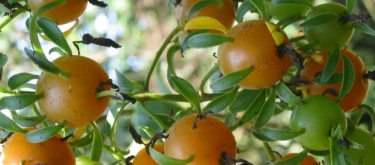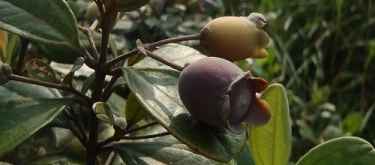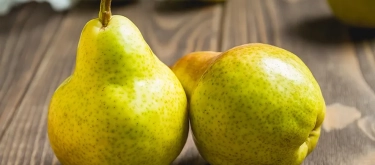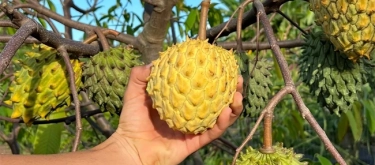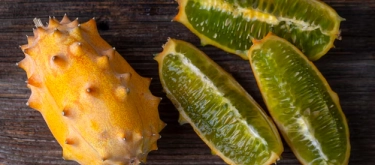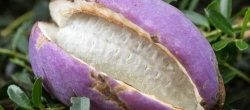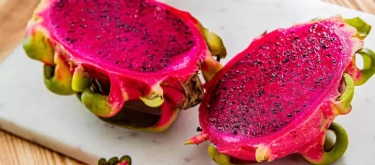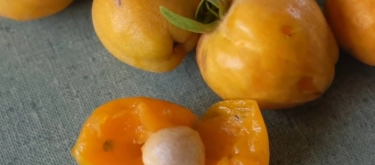Prickly Pear (Opuntia): Taste Profile, Aroma, Benefits and Health Risks
Prickly Pear (also known as Opuntia, Tuna Fruit, Cactus Pear; Opuntia ficus-indica) is a cactus fruit native to the arid regions of Mexico and Central America, now widely cultivated in Mediterranean, Australian, and North African climates. Celebrated for centuries for its sweet, refreshing taste and nutritional richness, prickly pear has become globally popular for its culinary versatility, vibrant color, and unique texture.
Opuntia fruits contain small, edible seeds that may cause mild digestive discomfort if consumed in excess. Individuals allergic to cactus or succulent plants should exercise caution. Due to high dietary fiber content, excessive consumption may lead to bloating or gastrointestinal upset. Moderate consumption during pregnancy is considered safe.
What does Prickly Pear (Opuntia) taste like?
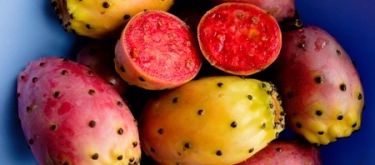
Complete Sensory Description:
Taste
Prickly pear offers a pleasantly sweet, mildly tangy flavor with subtle melon-like and berry undertones. Its taste profile often combines notes of watermelon, strawberry, raspberry, and slight floral nuances, creating a refreshing and balanced sweetness.
Aroma
The aroma is delicate, fresh, and fruity, reminiscent of watermelon and berries, combined with subtle floral notes, especially prominent in fully ripe fruits.
Texture
The fruit has a firm yet easily peeled skin, enclosing soft, juicy, pulp filled with numerous small edible seeds. The texture of the pulp is smooth, jelly-like, and succulent, with seeds providing a pleasant crunchiness reminiscent of kiwi fruit.
Appearance
Prickly pears are oval-shaped fruits (6–10 cm long), covered with a tough skin featuring tiny spines (glochids). The skin color ranges from vibrant green and yellow-orange to vivid red and purple hues. Internally, the pulp color is vivid, varying from yellow, orange, or red to deep purple, depending on the variety.
In-depth Flavor Analysis:
The appealing flavor profile of prickly pear emerges from the balanced combination of natural sugars, organic acids, and aromatic compounds:
-
Sweetness and Acidity: Sugars, mainly fructose and glucose, provide refreshing sweetness with mild melon-like character. Malic and citric acids lend gentle acidity, enhancing sweetness and balancing the flavor without sharpness or strong tartness.
-
Aromatic Complexity: Aromatic compounds include esters such as ethyl hexanoate and ethyl acetate, delivering fruity sweetness reminiscent of melon and berries. Subtle terpenes (linalool, geraniol) contribute delicate floral notes, enriching sensory depth.
-
Bitterness and Astringency: Minimal bitterness or astringency occurs due to low tannin content, resulting in a gentle, smooth flavor experience.
-
Environmental Influence: Flavor intensity varies significantly based on growing conditions and ripeness. Fruits from warm, dry climates generally offer enhanced sweetness, brighter flavors, and more aromatic complexity.
Varieties and Culinary Applications:
Several prickly pear varieties exist, differing mainly in pulp color, sweetness, and aroma intensity:
- Red/Purple Varieties: Sweetest, typically eaten fresh or used in beverages and desserts.
- Yellow/Orange Varieties: Milder sweetness, often used in culinary applications such as sauces and jams.
Culinary uses include:
- Fresh Consumption: Frequently eaten fresh, peeled, and chilled, offering refreshing sweetness.
- Beverages: Commonly blended into juices, smoothies, cocktails, and traditional Mexican beverages like agua fresca.
- Desserts and Sweets: Widely used in ice creams, sorbets, jams, jellies, fruit sauces, and candy preparations due to its natural sweetness and attractive color.
- Savory Dishes: Occasionally used in salads, sauces, or paired with seafood and grilled meats for flavor contrast.
Selection and Storage:
Select fruits with vibrant, unblemished skin that yield gently to slight pressure, indicating ripeness. Handle carefully, as tiny spines (glochids) can cause irritation. Store fresh fruits refrigerated in breathable containers for up to one week. Prickly pears also freeze well after peeling and seeding, preserving flavor and texture.
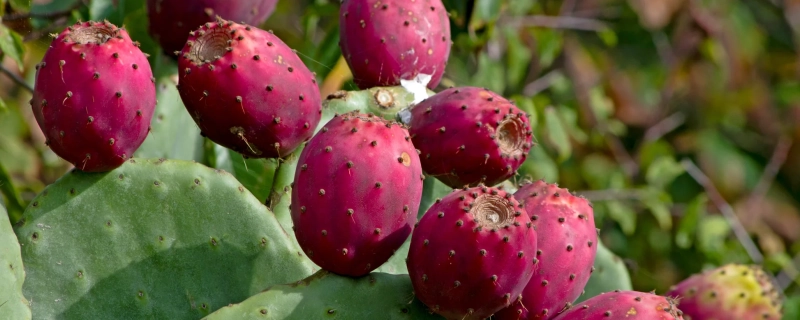
Nutritional Insights:
Prickly pear is notably nutritious, providing dietary fiber, vitamins C and B-complex, antioxidants (betalains and flavonoids), calcium, magnesium, and potassium. Regular consumption can support digestive health due to its fiber content, boost immunity and reduce inflammation through antioxidants, and aid cardiovascular health by managing cholesterol and blood pressure. Prickly pear is also recognized for potential blood-sugar-regulating effects, beneficial for individuals prone to diabetes or insulin resistance.
Expert Insights & Culinary Tips:
- Flavor Pairings: Prickly pear pairs exceptionally well with citrus fruits, honey, mint, ginger, yogurt, soft cheeses, and seafood.
- Preparation Recommendations: Peel carefully to remove skin and glochids completely. Serving chilled enhances the fruit’s refreshing sweetness. Seeds add texture, but puréeing and straining pulp yields smooth juice or sauces.
- Safety Precautions: Always handle prickly pears carefully using gloves to prevent irritation from tiny spines.
Interesting and Curious Facts:
- Prickly pear cactus has historically provided essential hydration and nutrition in arid regions, particularly important in traditional Mexican and indigenous cultures.
- The cactus pads (nopales) are also edible and commonly used in savory dishes in Mexican cuisine, offering nutritional benefits and mild flavor.
- In traditional herbal medicine, prickly pear fruits and cactus pads have been used for centuries to treat inflammation, gastrointestinal disorders, and wounds due to their anti-inflammatory and antioxidant properties.
Harm and Dietary Considerations:
Prickly pears are generally safe but can cause mild digestive upset if consumed excessively due to high fiber and seeds. Individuals allergic to cactus or succulent plants should consume cautiously. Safe in moderation for pregnant and breastfeeding women.
Religious Dietary Considerations:
Prickly pear fruits have no known restrictions within major religious dietary guidelines, including Halal, Kosher, Hindu vegetarianism, and Buddhist dietary traditions, making them universally acceptable.
Final Thoughts & Sensory Journey:
Prickly pear captivates with its vibrant sweetness, refreshing juiciness, and delicate melon-berry aroma. Offering nutritional richness, culinary versatility, and fascinating cultural history, this unique cactus fruit provides a delightful sensory experience.
Resources:
- "Edible Medicinal and Non-Medicinal Plants, Volume 1: Fruits" by T.K. Lim (Springer, 2012)
- "Cactus Pear: Botany, Production and Uses" edited by Paolo Inglese and Carmen Mondragon-Jacobo (FAO, 2017)
- "Handbook of Fruit and Vegetable Flavors" by Y.H. Hui (John Wiley & Sons, 2010)
